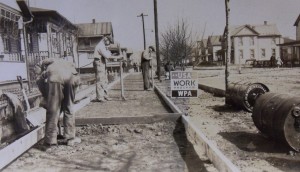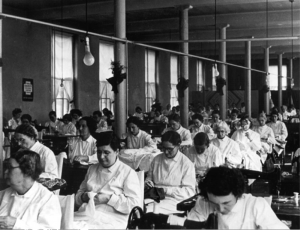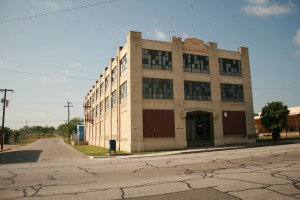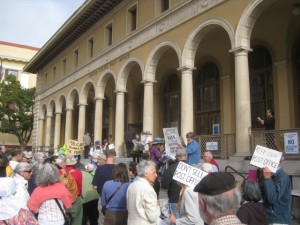
Citizens protest at the Downtown Berkeley Main Post Office
Berkeley, California
Despite growing public protest, the U.S. Postal Service is moving apace to sell the public’s historic post offices. Last month, the Postal Service added four more post offices on the National Register of Historic Places to its “For Sale” list: California’s La Jolla Wall Street Post Office, built in 1935; New York City’s Old Chelsea Station on West 18th Street, and the Bronx General Post Office on the Grand Concourse, both built in 1937; and the Berkeley Downtown Post Office, which, in spite of a year long campaign to keep the century-old building in the public domain, was recently slated for sale.
Like many other endangered post offices, these buildings contain unique New Deal artworks.
During the 1930s the federal government put thousands to work building the nation’s postal system. In big cities and small towns alike, New Deal post offices are among the most artful, architecturally distinguished, and beloved buildings.
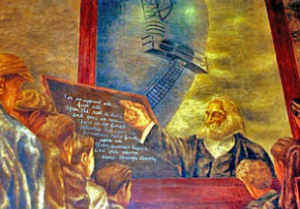
The Bronx Post Office
The thirteen murals in the Bronx Post Office created by New Deal artists Ben Shahn and Bernarda Bryson are considered masterpieces.
“Apparently the country is done with that kind of idealism,” notes Gray Brechin, geographer and Living New Deal Project scholar, “Rather than building beautiful public places, the federal government is selling them off.”
Buildings on the National Register of Historic Places are afforded some protection—their exterior must be preserved. But once sold the buildings are often gutted. In at least one case, a 1937 post office in Virginia Beach, Virginia was demolished to make way for a Walgreen’s pharmacy.
The National Historic Preservation Act ensures public access to public artwork, but when post offices are sold the murals and sculptures often are removed to storage. Even when the art remains in place, it’s up to the new owners whether the public may view it.
The Postal Service financial crisis started in 2006 when Congress required the Postal Service to pre-pay 75 years of workers’ benefits within ten years. Although many blame email for the Postal Service’s demise, the Postal Accountability and Enhancement Act of 2006 is responsible for $4 out of every $5 in Postal Service debt—more than $15 billion in 2012. In response, the Postal Service is cutting services and selling many of its most valuable properties.
CB Richard Ellis, a giant commercial real estate firm, holds the exclusive contract to sell postal properties worth billions. CB Richard Ellis’ chairman is Richard Blum, a University of California Regent and the husband of California Senator Dianne Feinstein. So far, the press has shown no interest in investigating how that contract was awarded, nor its terms.
Senator Bernie Sanders (I-VT) and Rep. Peter DeFazio (D-OR) introduced legislation to repeal the law responsible for the Postal Service’s death spiral. The bill recently passed the Senate but the other has yet to be voted on in the House.
The National Trust for Historic Preservation named the Historic Post Office to its list of America’s 11 Most Endangered Places of 2012.
Read Francis O’Connor’s open letter about post office art »
For a list of endangered post offices go to: https://www.savethepostoffice.com
Susan Ives is communications director for the Living New Deal and editor of the Living New Deal newsletter.
